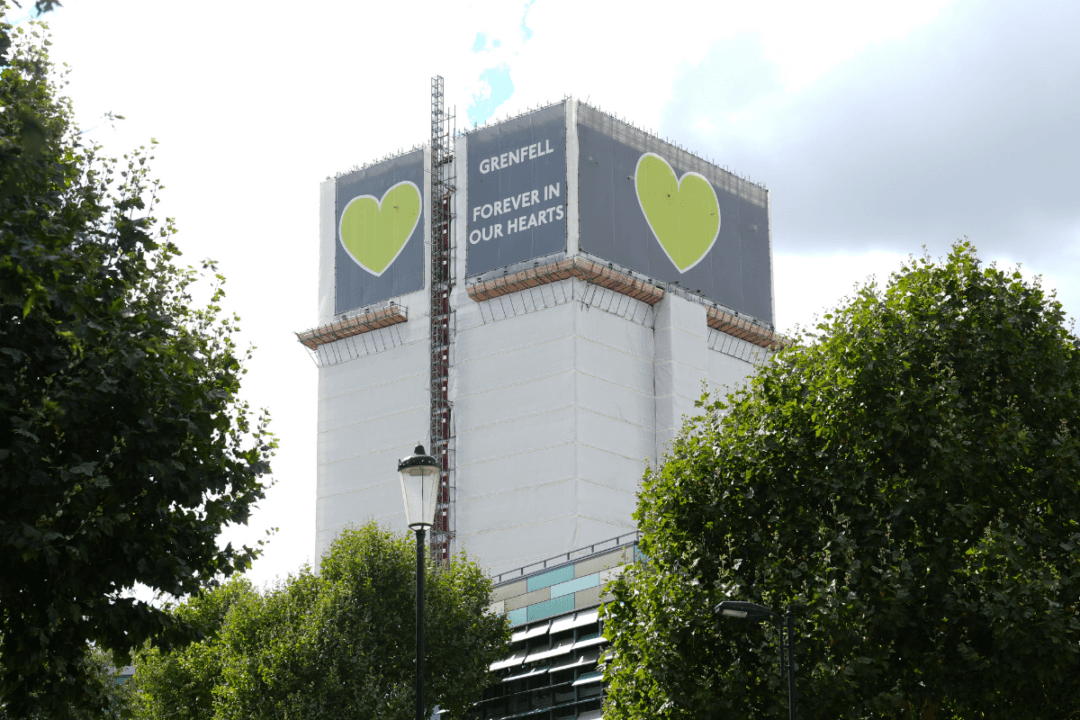Removing flammable cladding from multistory buildings in England could cost between £12.6 billion and £22.4 billion, the spending watchdog has said.
The NAO added that even though the Building Safety Act 2022 made it mandatory to register high-rise buildings (18 metres and higher), there was no mandatory registration for medium-rise buildings (between 11 and 18 metres) which are more numerous in number, meaning that “there is a risk that some may never be identified.”
“There is a long way to go before all affected buildings are made safe, and risks MHCLG [Ministry of Housing, Communities and Local Government] must address if its approach is to succeed,” Davies said.
Work to identify and remove aluminium composite material (ACM) and other forms of dangerous cladding was prompted by the deaths of 72 people after fire engulfed the Grenfell Tower high-rise in west London on July 14, 2017.
Up to 12,000 Buildings
As of August, the number of medium-and high-rise buildings with unsafe cladding was estimated to be between 9,000 and 12,000, with the actual number identified and within the MHCLG portfolio being 4,771 (53 percent and 40 percent of the estimated totals, respectively).The proportion of those buildings which have had remediation work completed is around 12 percent and 16 percent of the department’s low and high estimations.
The MHCLG expects remediation to be complete by 2035. However, the NAO said that the work “is not currently on course to complete by 2035 and there are significant challenges to overcome.”
£5.1 Billion
While private owners and social housing providers are responsible for fixing their buildings, the government has committed £5.1 billion for a grant to remove the cladding.In addition, the new Building Safety Levy, to be paid for by developers on new developments, is also going to support remediation works. But the NAO notes that it is not expected to start until Autumn 2025 and the MHCLG has not specified the payment mechanisms.
Given the wide range of projected costs, the Building Safety Levy not yet in place, and the unconfirmed full number of buildings affected, the audit office said the department will have to “manage risks” in order to protect the taxpayer and keep a cap on the £5.1 billion grant.
‘Unacceptably Slow’
Building Safety Minister Alex Norris admitted that the pace of remediation has been “unacceptably slow.”“Since coming into office, we have ramped up work with local authorities and regulators to speed up remediation and we will set out a remediation acceleration plan soon,” Norris said.
Norris reiterated the government’s commitment to invest £51. billion to remove the cladding, with the minister adding that the Labour administration would “empower regulators to take enforcement action against those building owners who fail to act.”
In response to the NAO’s report, the End Our Cladding Scandal (EOCS) campaign group said: “We know that being in government may mean difficult decisions must be taken, but those decisions must be made with ordinary people first and foremost in mind, rather than the interests of business which have dominated government thinking for decades.
“Anything less would be a betrayal of all innocent victims of this scandal.”
The report said that since 2010, successive governments had a “deregulatory agenda” which dominated thinking “to such an extent that even matters affecting the safety of life were ignored, delayed or disregarded” and that by 2016, the government was “well aware” of the risks of using combustible material in cladding and insulation.







